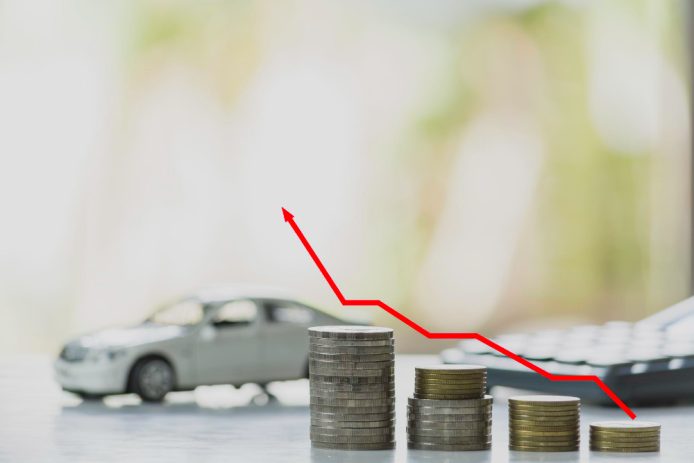As car prices in the US begin to retreat from their pandemic-fueled highs, American consumers like Darin Davis are facing a new financial challenge: soaring auto insurance rates. When Davis, a 56-year-old Dallas real estate agent, renewed his insurance on his recently purchased 2024 Cadillac XT4, he was met with a nearly doubled premium, significantly denting the joy of owning a new car.
While car prices have started to stabilize due to easing supply chain disruptions, insurance rates have surged, with some policies now representing over a quarter of a vehicle’s total ownership cost. The combination of factors such as increased repair costs for complex vehicles and heightened storm damage from climate change has contributed to this insurance inflation.
This imbalance in the automotive market presents a dilemma for both consumers and policymakers. Despite a 3.5% rise in the Consumer Price Index, auto insurance costs have skyrocketed by 22.2%, marking the sharpest increase since the 1970s. As new and used car prices begin to moderate, dealers are offering more incentives to buyers, yet insurance expenses are becoming a significant deterrent for budget-conscious consumers.
According to Kelley Blue Book, insurance rates now account for a larger portion of the total cost of vehicle ownership, projecting an increase from 16% to 26% for compact cars and from 13% to 20% for compact SUVs between 2019 and 2024. Factors such as increased vehicle total losses, longer repair times due to mechanic shortages, and the proliferation of electronic components in modern cars are driving up insurance premiums.
Innovations in car manufacturing, such as Tesla’s gigacasting process, are also influencing insurance costs. While these advancements may reduce production expenses, they often lead to higher repair costs for damaged vehicles, further contributing to insurance rate hikes.
As consumers grapple with these rising insurance expenses, some are resorting to cost-saving measures such as bundling policies or increasing deductibles. However, the broader implications of this insurance inflation extend beyond individual budgets, presenting challenges for policymakers striving to contain overall inflation in the economy.
Featured Image: Freepik









